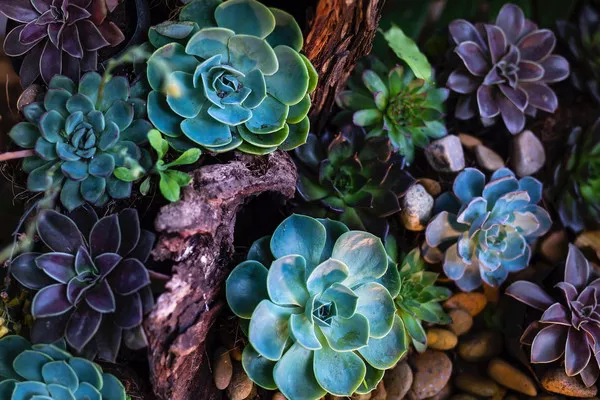Succulents, with their diverse and captivating appearances, have become increasingly popular among plant enthusiasts. Whether you’re a seasoned gardener or a beginner looking to expand your green thumb, succulents are an excellent choice. The key to enjoying a bountiful collection lies in successful propagation. In this comprehensive guide, we’ll explore various quick propagation techniques to ensure your succulent garden flourishes.
Understanding Succulents
Before delving into propagation methods, it’s crucial to understand the unique characteristics of succulents. Succulents are water-storing plants that have adapted to arid climates. Their thick, fleshy leaves and stems enable them to retain water, making them resilient and low-maintenance. These characteristics play a vital role in the success of succulent propagation.
Choosing the Right Succulents
Selecting the right succulents for propagation is the first step toward a thriving garden. Opt for healthy parent plants with vibrant colors, firm leaves, and no signs of disease or pests. The diversity within the succulent family provides numerous options, from echeverias and sedums to aloe vera and jade plants.
Soil and Container Selection
Succulents thrive in well-draining soil to prevent waterlogged roots. A mix of potting soil and perlite or sand provides the ideal growing medium. When selecting containers, choose those with drainage holes to further prevent water accumulation. Adequate drainage is essential for successful succulent propagation.
Leaf Propagation
Leaf propagation is a popular and straightforward method for expanding your succulent collection. To propagate succulents from leaves, carefully pluck healthy leaves from the parent plant, ensuring they are intact and undamaged. Lay the leaves on a dry surface for a day or two to allow the cut ends to callous. This process minimizes the risk of rot during propagation.
Once the leaves have calloused, place them on top of well-draining soil in a shallow container. Mist the soil lightly, keeping it consistently moist until tiny roots and new growth appear. Be patient, as succulent propagation through leaves can take several weeks to months.
See Also: How to replant zebra succulent?
Stem Propagation
Stem propagation is another effective method, especially for succulents with elongated stems or rosettes. Carefully cut a healthy stem or rosette using clean, sharp scissors or pruning shears. Allow the cut end to dry and callous before planting it in well-draining soil.
When planting succulent stems, bury the cut end in the soil, leaving a portion of the stem above the surface. Water the soil lightly and place the container in a bright, indirect light location. Over time, the buried stem will develop roots, and new growth will emerge, establishing a new succulent plant.
Division Propagation
Division propagation is suitable for succulents that have multiple stems or offsets. Gently remove the entire plant from its pot and separate the individual stems or offsets. Ensure each division has its roots and a portion of the stem attached.
Plant the divisions in separate containers with well-draining soil. Water the soil lightly and provide adequate light. Division propagation is a quick way to multiply your succulent collection, and it allows you to share the beauty of these plants with others.
Offsets and Pups
Many succulents produce offsets or pups, which are miniature versions of the parent plant that grow at the base. These can be easily detached and propagated to create new plants. Gently separate the offsets from the main plant and plant them in individual containers with well-draining soil.
Water the soil lightly and provide bright, indirect light. As the offsets develop roots and grow, they will become independent succulent plants. This method is not only quick but also ensures genetic diversity within your succulent garden.
Environmental Considerations
Succulent propagation success also depends on creating the right environmental conditions. Provide bright, indirect light to newly propagated succulents, gradually acclimating them to more intense sunlight. Avoid direct sunlight during the initial stages to prevent sunburn and stress.
Maintain a consistent watering schedule, allowing the soil to dry out between waterings. Overwatering is a common issue that can lead to root rot and other problems. Additionally, protect succulents from extreme temperature fluctuations, as they prefer stable conditions.
Fertilizing Succulents
While succulents are known for their resilience in poor soil conditions, providing them with adequate nutrients enhances their overall health and appearance. Use a balanced, diluted fertilizer during the growing season, typically in spring and summer. However, avoid over-fertilizing, as succulents are adapted to nutrient-poor environments.
Troubleshooting Common Issues
Even with the best care, succulents may face challenges during propagation. Recognizing and addressing common issues is crucial for maintaining a healthy garden. Keep an eye out for signs of overwatering, underwatering, pests, or diseases. Swift intervention can prevent these problems from spreading and impacting your succulents.
Conclusion
Succulent propagation is a rewarding journey that allows you to expand your collection, share the beauty of these unique plants, and witness the marvels of nature. By understanding the specific needs of succulents, choosing the right propagation method, and providing optimal care, you can quickly and successfully propagate succulents. Experiment with different techniques, and soon you’ll be enjoying a flourishing garden filled with diverse and stunning succulent varieties.


